The Waste Refinery at National Design Centre Singapore shines the spotlight on local and international creators designing with waste as the starting point
November 3, 2021
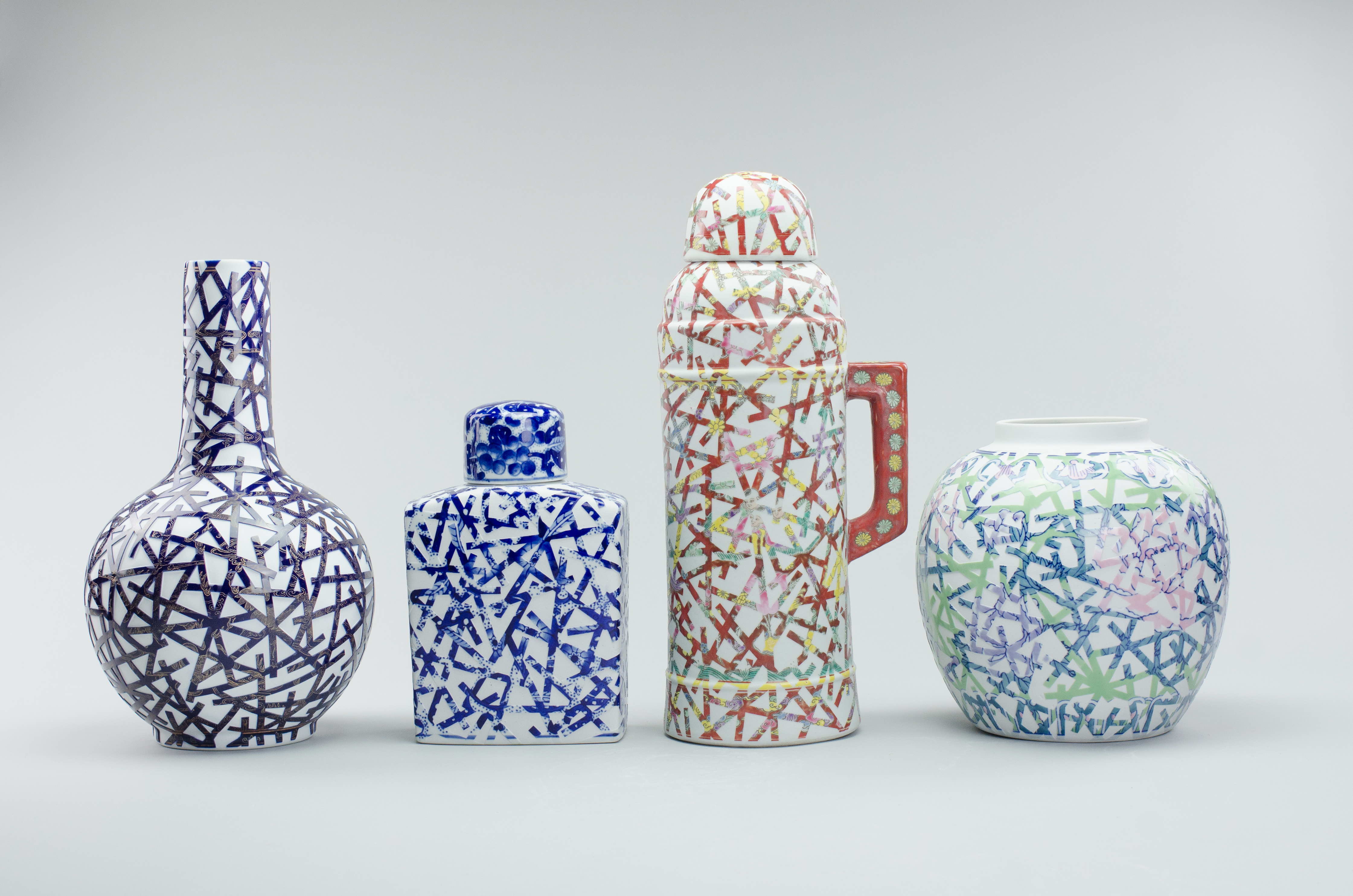
6 November 2021 – 16 January 2022
NDC Atrium & Design Gallery 1

3 November 2021 – Commissioned by DesignSingapore Council (Dsg) and curated & produced by award-winning Singapore creative agency Kinetic, The Waste Refinery at the National Design Centre Singapore is an exhibition centered on one of the world’s biggest sustainability challenges.
As the world meets to discuss the urgent climate agenda at COP26, The Waste Refinery presents works from a select list of Singaporean, regional and international designers and creatives. Running 6 November 2021 to 16 January 2022 at Singapore’s National Design Centre, The Waste Refinery brings together leading innovators looking to solve the problem of waste, and provide ideas towards a more sustainable future.
Without urgent action, global waste is set to increase by 70% over the next 30 years. As we grapple with municipal, industrial and agricultural waste across the world, the exhibition includes projects that span fashion, product design, art, craft and material innovation – from pineapple leaves as a substitute for leather, to creating homewares from sea shells and turning zinc ashes into porcelain glaze, the works on display showcase how waste can take on a second life as useful products with a focus on both form and function.
“The Waste Refinery shows how creative ingenuity can benefit communities by diverting waste from landfills and generating new revenue streams, while transforming raw materials into precious objects. We hope that this exhibition at the National Design Centre will inspire visitors to rethink how we prescribe value to objects and aesthetics, and see the endless potential of using design to achieve a more sustainable lifestyle,” says Mark Wee, Executive Director of Dsg.
The Waste Refinery asks: “What if waste could be reframed and thought of as an abundant resource, rather than unwanted material?” and “What if waste could be made useful and beautiful?” The inventive contributors to this project are united in the belief that the time has come to never let waste go to waste again.
FASHION

Under the category of fashion products, The Waste Refinery features Berlin-based company, Sonnet155 who uses two different post-industrial waste materials – discarded fruit peels left over from juice production and short cellulose fibres that are waste from textile factories – to create beautiful “temporary handbags”. Their bags feature a translucent fruit-leather that dissolves after a duration of usage and can be used to fertilise plants once it is no longer needed. A visual and textural treat, each bag is designed to entice people to use it to the full. At the end of its life, the biodegradable bag can be put to rest in the soil or dissolved in water. Fashion designer Johanna and textile designer Lobke met at art school in Berlin where they started working on Sonnet155. The duo creates design strategies and products to position sustainability as a treat rather than a burden. They hope to change the way people consume trends and fashion, and balance the use of a product and its material lifespan.

London-based company Petit Pli also features in The Waste Refinery with their project, Clothes That Grow. Petit Pli uses waste plastic bottles and recycled fabrics to create clothes that “grow” for newborns, toddlers and adults. Their products are uniquely designed into clothes that expand as you grow – up to seven times the original size – using their patented technology made from recycled materials. Petit Pli is a material innovation and Fash-Tech startup founded by aeronautical engineer Ryan Mario Yasin. Guided by the ethos of circular design, this London-based studio sets out to create more sustainable clothing by eliminating waste every step of the way: from how a garment is made, to the way it is used, as well as after its use.

Indonesian brand Indosole is also presented in the exhibition – a company that creates footwear using their Sole Engineering Tire Technology (SETT), that fashions highly durable footwear out of waste rubber from tyres and discarded old shoes. Currently creating flip flops and sliders, the company recycles these wasted, indestructible rubber tyres into some of the most durable footwear around.
HOME AND DESIGN

The Waste Refinery also features a number of home accessories and design products as part of the exhibition. This includes Monolith, the second collection by LAAT.SG, a furniture and accessories brand that creates pieces out of waste from renovation and construction projects. Founded by Cherin Tan, principal of LAANK interior design firm, together with Alvin Tan, co-founder of art and design collective PHUNK, the duo were alarmed by the amount of waste generated from construction and if they weren’t able to eliminate it, they wanted to create something useful with it. Alvin Tan has a strong background in fine arts and crafts, whilst Cherin in interiors and design, and bringing these skills together the pair gave a new life to these waste materials by creating furniture and homeware accessories that are artistic, cultural and yet still functional. LAAT's first collection, Klaus, which was launched in 2020, comprised items such as lamps, tables and benches, made from unwanted metal rods, tiles, glass panels and sanitary fittings. This collection quickly sold out and LAAT followed with Monolith, their second collection featuring jewellery trays, as well as standing and table mirrors.

Exhibiting as part of a large display will be Radical Plastics, a collection by Wasted Co. by Space Available which includes a number of furniture pieces, design products and clothing created out of plastic waste. Focused on how the plastic crisis is one of our most pressing environmental issues and believing that design and creative collaboration can be a vehicle for change, Space Available uses plastic waste to create new circular products in Radical Plastics. On top of helping to clean up our lands and seas, they hope their creations will spur people into action. Items on display will include the Peggy Chair designed in collaboration with South Korean DJ Peggy Gou. The Peggy Chair is made with over 20kg of plastic saved from landfills, rivers and the ocean. A zero-waste design, its own offcuts are used to weld the chair together, removing the need for additional materials or adhesive. This also ensures the chair is easily recycled if needed, falling in line with circular design principles.

Their Meditation Chair and Artisan Chair will also be on show. The studio’s research found that there is enough plastic in our oceans and landfills to last us forever, if recycled and repurposed back into a circular system. The Meditation Chair is part of a series of woven chairs made with plastic strips derived from such waste. The Artisan Chair is created out of plastic waste, cleaned and melted into strips, then handwoven by a Balinese master weaver Nano Uhero on a bamboo frame. The creation of these chairs also supports the local craft community.

Based in Indonesia and led by a global community of designers, artists, scientists and environmentalists, Space Available is a creative platform on a mission to build a sustainable future, connecting the dots between nature, design and culture. Their holistic approach involves bio innovation, radical recycling of waste, future craft and digital communications for the new world.

Roger & Sons also features as part of The Waste Refinery – the much-loved Singaporean family-run business that use waste trees that have been felled for construction locally and would normally be discarded or chipped. Roger & Sons upcycle the wood for use in home furniture and fine objects. Roger & Sons are also currently collaborating with other local businesses to explore which other waste products – like milk bottles – can be upcycled.

Another homeware company featured in the exhibition is Singaporean retailer Hock Siong. Hock Siong started out as a karung guni (rag-and-bone) business and has evolved to become a secondhand furniture specialist retailing and trading pre-used homeware. Other than the salvage of such items, they are also proponents of upcycling, often refurbishing furniture to extend their longevity and use.
For The Waste Refinery, Hock Siong teams up with Singapore-based weaving specialist Soft Studio for a special installation. Damaged, discarded old chairs take the spotlight in a stand against the throwaway ethos of the modern world. Instead of hiding the flaws, each chair is visibly mended with brightly coloured yarn that is salvaged from discarded textiles and other waste materials. Just like how every scar on a body tells a personal story, each stitch in this artistic repair pays tribute to history and the process of creative renewal.
MATERIAL INNOVATION

The Waste Refinery also presents the fascinating explorations designers are working with to turn waste byproducts into a whole new material for creating altogether. Mycotech Lab is a bio-based material startup from Indonesia whose primary research and development focuses on mycelium – the root system of mushrooms – and its possible applications. For The Waste Refinery, the company is exhibiting Guardians Of The Future - a pair of guardian lions that have been grown into shape using the material. Stronger than concrete kilo for kilo, mycelium is hailed as the building block of the future and is sustainable on many levels. Grown on agricultural byproducts, mycelium turns waste into a useful resource. It is also biodegradable, leaving behind less waste than traditional building materials. This artwork was commissioned by MINI Singapore for MINI EXTRAODDINARY 2019.

Another project on display that uses agricultural byproducts is Piñatex by Philippines-based, Ananas Anam. Each year, an estimated 76 million tonnes of pineapple leaves are left as waste by the pineapple industry and Ananas Anam has used the waste – that would otherwise be burned or discarded – to create a natural textile that can be used as a substitute for animal leather. Their material has a supple leather-like texture and finish, and this innovative material is envisioned as a sustainable and cruelty-free alternative. Working to the values of a circular economy, Ananas Anam combines research and innovation to enhance the well-being of the earth and its people throughout the entire life cycle of the product. It supports local communities by working directly with farming cooperatives to create an additional stream of income for pineapple farmers in the Philippines.

Sea Stone is a project on display by Newtab-22. Based in Seoul, South Korea, Newtab-22 is a material-led design studio started by Hyein Choi and Jihee Moon. The duo is interested in exploring new, natural, and overlooked materials. Coupling innovative approaches with an eye for the aesthetically pleasing, they hope to bring attention to the issue of sustainability through their work. For Sea Stone, the studio has created a sustainable material composed of natural, non-toxic ingredients and binders out of seashells. Similar to limestone used for cement, seashells are mainly composed of calcium carbonate. Yet every year, 7 million tons of shells are discarded by the seafood industry and aquaculture. Even though some are recycled or used as fertiliser, most end up in landfills or are left as litter by the seaside. In Project Sea Stone, Newtab-22 puts this waste to good use. The seashells are ground by hand, avoiding the use of heat and electricity to minimise carbon footprint. The shell powder is then transformed into unique homeware that is equal parts form and function. The material features a hardness and aesthetic texture like a stone, which can then be used to create products with a terrazzo look.
ART & OBJECTS

The showcase features a multitude of art and fine objects innovatively using waste products as the medium. I Walked A Landscape With My Fingers by Singaporean self-taught textile artist Kelly Limerick (known as Kllylmrck) features her crochet artworks created out of fabric offcuts and personal keepsakes. Inspired by various terrains and geographical landforms, this explorative project incorporates various keepsakes from a personal hoard that do not serve any function yet are too precious to throw away. By doing so, the work aims to highlight the thin line between ‘trash’ and ‘treasure’, with the ‘worthless’ given value and a second life. Often creating without a sketch or fixed design, Kllylmrck has stretched this traditional craft beyond predictable patterns and challenges the stigma of crochet being a ‘granny craft’. Her work ranges from soft sculptures, to textile hangings, installations, and an exploration of assemblages.

Another Singaporean maker, designer and artist Genevieve Ang, known as Gellyvieve, also features in The Waste Refinery with her work Confetti Rocks. Gellyvieve creates fine objects incorporating failed ceramic pots she created in the past. She creates textures in her new works using grog – a term used for crushed solids that are added into the clay mix. The resulting granular material is then transformed into new artworks, in the process creating a confetti-like texture as well as closing at least one loop of waste. Genevieve Ang is a maker, designer and artist who expresses herself through ceramics and spatial installations. Fascinated with how clay is used everywhere, emoji and the evolution of languages, she is constantly searching for new forms to simplify the world around her. Ang is creating new works for the exhibition, including lamps out of grog.
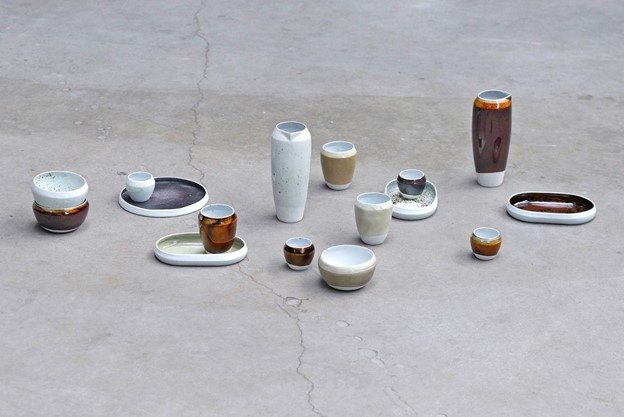
Currently based in the Netherlands, Lithuanian material designer Agne Kucerenkaite’s fine objects also feature in the exhibition with Ignorance is Bliss. Kucerenkaite uses zinc ashes, a toxic byproduct from zinc factories, to create beautiful porcelain pieces glazed by pigment made from this waste. Drinking water supply and soil remediation industries produce thousands of tonnes of residue a year, in no small part due to metal mining and its excessive processing. In an effort to find a use for this byproduct, Agne Kucerenkaite has developed colour pigments from this waste. The coloured glazes for the ceramic collection are solely derived from the metals found in the industrial residues. The project aims to give a new identity to waste and to the built environment, with empathy for planetary health.

Pong, a project by Australian industrial design studio Préssec, started as a weekly design challenge turned into a desire to ‘make the render real’. Pong is a series of table tennis bats crafted from sheets of terrazzo-like recycled plastic. These are made from plastic waste like milk bottles, with coloured plastics artfully interspersed on whites for a popping effect. Improving on the conventional three-layer bat construction which uses more materials and energy, the Pong bat features a streamlined design and is produced as a single piece. Préssec also hollowed out the handle to make the bat lighter. Industrial designers Sam Weise and Cristina Borràs are the playful duo behind Sydney studio Préssec. Their passion lies in bringing design to life by making things – in essence, making ideas tangible.
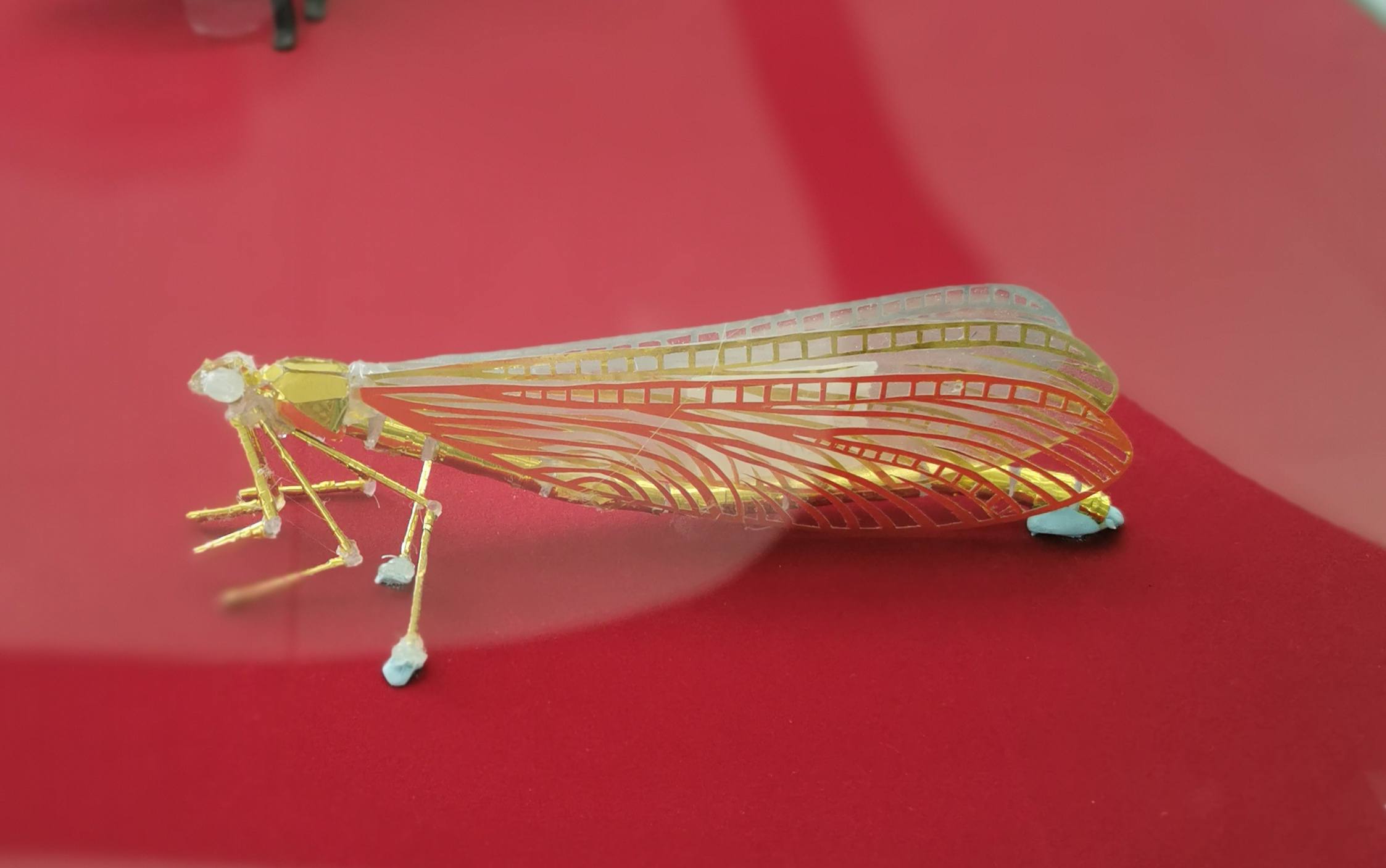
Singapore’s own LASALLE College of the Arts are also presenting as part of The Waste Refinery with Insectica Plastica. The project is based on the concept that there is beauty to be found if you know where and how to look. In this assemblage project, art students are challenged to create insect sculptures out of found objects and materials like plastic caps and straws. An exercise in the twin processes of deconstruction and reconstruction, the resulting artworks also demonstrate how imagination and creativity can be applied to impart value to scraps commonly overlooked. The LASALLE College of the Art is a leading contemporary arts and design institution, and provides a nurturing, interdisciplinary learning environment to inspire the next generation. Insectica Plastica is the work of students from the Visual Studies Programme (Level 1, 2018): He Wen Zhou, Jacob Ariel, Koh Tat Wee, Lee Yun Jo, Marie Angelina, Stemple Haeun, Zhou Si Hao.

Community-Woven Tapestries is a project presented by Soft Studio which features eclectic tapestries that were collectively woven by visitors on a wooden floor loom in a pop-up free-weaving studio under the guidance of artist-curator Natalia Tan. Using materials like discarded clothing and plastic packaging, the tapestries put waste to work as they celebrate the joy of weaving and community. These artworks were created during Art Encounters: Into Softer Worlds presented by Art Outreach and Marina Central from May to June 2021. Singapore-based Soft Studio, founded by artist and curator Natalia Tan, is a textile studio that creates art experiences that invite people to touch, connect, and play. Working with care and curiosity, Soft Studio honours traditions, communities and our natural world while building a contemporary language of craft and celebrating all that is tactile, spontaneous, and healing.

Botanical ink-making studio Wild Dot is another Singaporean practice presenting works in the display. Wild Dot specialises in making paints and artworks with natural pigments. Their exploration is inspired by the abundance of local material, particularly in natural landscapes. Through their craft, they aim to bridge artmaking and nature education, and to demonstrate how waste can be a source of creative inspiration. For The Waste Refinery, Wild Dot has created The Ink-Surrection Series, a project that looks into the resurrection of things commonly discarded such as fruit peels, fallen leaves and flowers, and wood shavings. Combining traditional knowledge of extracting colours from nature and their research on making paints, Wild Dot revives these materials and extends their lifespan by turning them into watercolours and inks for artmaking, opening the eye to the creative and aesthetic potential of waste.
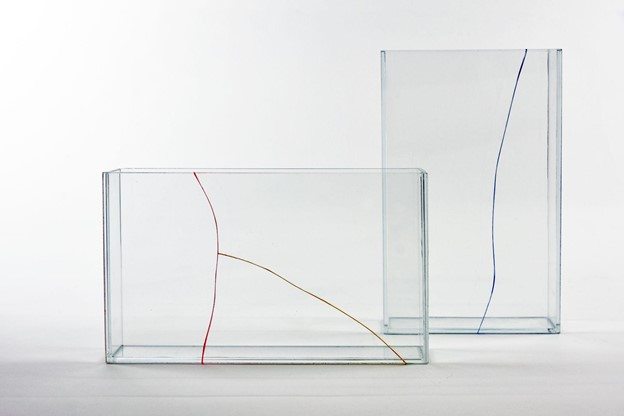
Japanese designer Kazuhiro Yamanaka is presenting artworks using the kintsugi technique. Kazuhiro Yamanaka’s interest spans furniture design, product design, lighting design and installations. His work navigates between the emptiness and fullness of surfaces, the subtle play of trompe l’oeil and the harmony of proportions. He believes that the designer’s job is to create maximum impact with minimal use of material. For The Waste Refinery he presents Irotsugi. For the series of artworks, Yamanaka is inspired by the unique beauty of broken glass, which he has artfully mended with coloured resin, purposefully emphasising the cracked edges that follow the providence of nature. The bright colours also serve to convey the sense of tension inherent in the fissures even as they herald the joyful rebirth. While inspired by the centuries-old tradition of kintsugi, the reborn glass bears an unquestionably modern aesthetic.
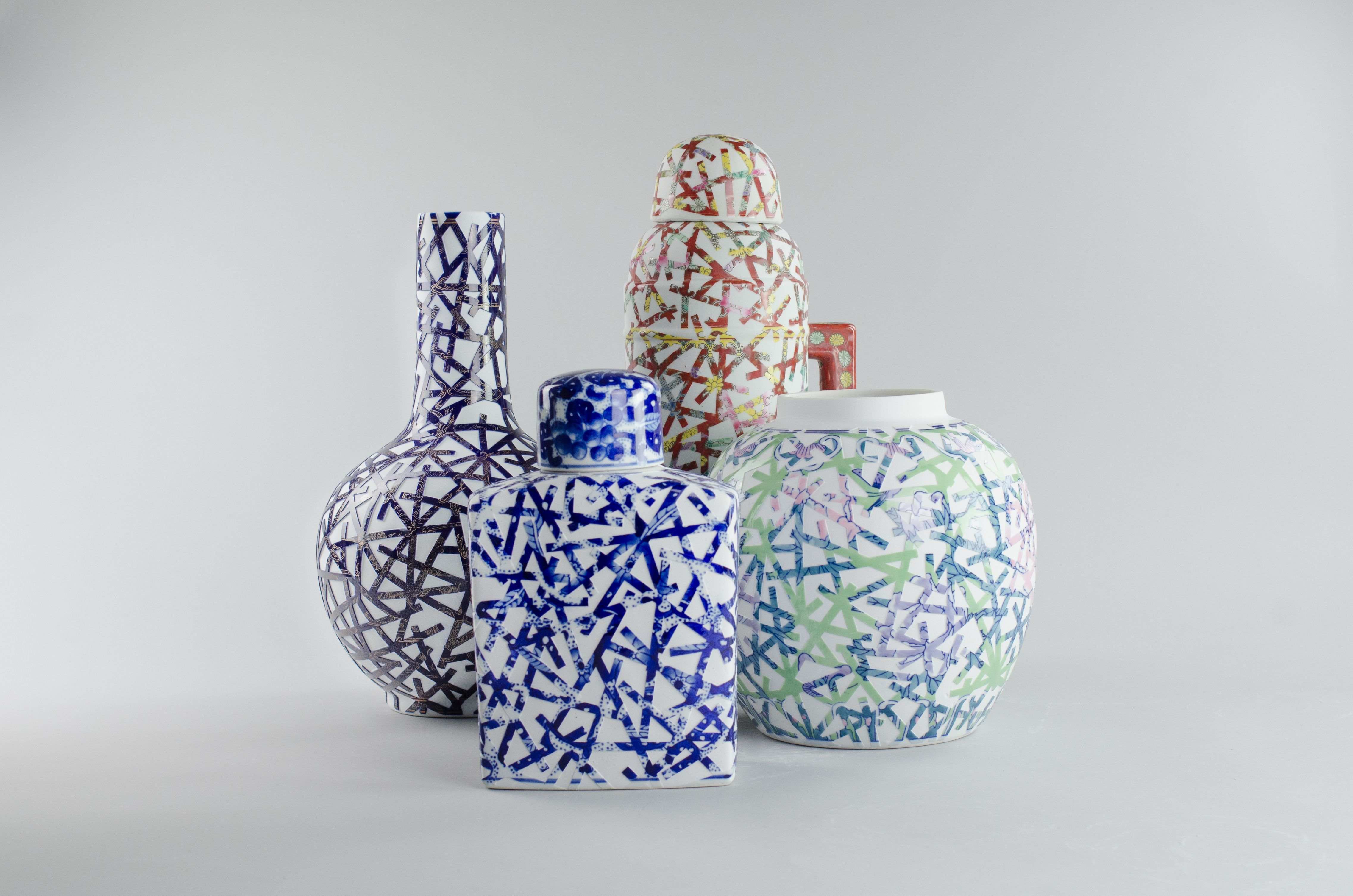
Well known Singaporean designer and educator, Hans Tan is also presenting fine art works for the exhibition with his series Striped Ming using deadstock Chinese traditional vases forlorn by current taste aesthetics. The porcelain vessels of this collection are sourced from old shops and thrift stores. Once decorative and sought after, shifts in tastes have rendered them kitschy and old-fashioned, left on dusty shelves as dead stock. Using a resist-blasting technique, parts of the original glaze are taken off to create new contemporary motifs. The process revitalises these outdated porcelain pieces, resuscitating their value by imbuing them with a renewed aesthetic experience. Hans Tan is a designer and educator whose work tiptoes on the boundaries between design, craft and art. His practice deploys design as medium while maintaining a keen focus on developing materials and processes. His narratives comment on design and its industry as a phenomenon, especially in the context of heritage, consumption and waste.

Singaporean artist and educator, Zen Teh’s art practice is shaped by her proficiency in photography and painting alongside a deep interest in people’s relationship with the natural world. Her continual investigation into this intersection manifests in work that spans disciplines and mediums. For The Waste Refinery, Teh will present a series of meaningful artworks and photographic sculptures titled Garden State Palimpsest. Jagged blocks of marble, granite and stone found amidst construction debris and factory discards form the foundation for this series of photographic sculptures. Superimposed on these are images of idyllic rural Singapore as recalled by ex-kampong dwellers, creating a pointed juxtaposition of natural landscapes against its replacement, the built-up urban environment. In themselves, the materials also challenge conventional notions of waste and shine light on its possibilities.
-Ends-
NOTES TO EDITORS
FULL EXHIBITOR LIST:
- Agne Kucerenkaite (Lithuania): https://www.agne-k.com/
- Ananas Anam (Philippines): https://www.ananas-anam.com/
- Gellyvieve (Singapore): https://www.gellyvieve.com/
- Hans Tan (Singapore): https://hanstan.net/
- Hock Siong (Singapore): https://www.hocksiong.com.sg/
- Indosole (Indonesia): https://indosole.com/
- Kazuhiro Yamanaka (Japan): http://www.kazuhiroyamanaka.com/
- Kllylmrck (Singapore): http://www.kllylmrck.com/
- LAAT (Singapore): https://www.instagram.com/laat.sg/?hl=en
- LASALLE College of the Arts (Singapore): https://www.lasalle.edu.sg/
- Mycotech Lab (Indonesia): https://mycl.bio/
- Newtab-22 (South Korea): https://www.newtab-22.com/
- Petit Pli (England): https://shop.petitpli.com/
- Préssec (Australia): https://www.pressec.design/
- Roger&Sons (Singapore): https://www.rogerandsons.sg/
- Soft Studio (Singapore): https://www.instagram.com/softstudiosg/?hl=en
- SONNET155 - Johanna Hehemeyer-Cürten & Lobke Beckfeld (Germany): http://johanna-hehemeyer.com/sonnet155/
- Space Available (Indonesia): https://spaceavailable.tv/
- Wild Dot (Singapore): https://wildd.sg/
- Zen Teh (Singapore): https://www.zenteh.com/
National Design Centre
111 Middle Road, Singapore 188969
9 am to 9 pm daily
Free admission
About the National Design Centre
The National Design Centre is the nexus of design, the meeting point for creative minds and businesses and the venue for presenting all things design. It is also home to DesignSingapore Council. The repurposed, award-winning conserved building is as much an emblem for outstanding Singaporean design and architecture, as it is a thriving venue for visitors to attend showcases and programmes. Find out more at www.designsingapore.org/national-design-centre.html
About the DesignSingapore Council
DesignSingapore Council’s (Dsg) vision is for Singapore to be an innovation-driven economy and a loveable city through design by 2025. As the national agency that promotes design, our mission is to develop the design sector, help Singapore use design for innovation and growth, and make life better in this UNESCO Creative City of Design. The Dsg is a subsidiary of the Singapore Economic Development Board. For more information, please visit www.designsingapore.org
About Kinetic
Kinetic is a boutique design, advertising and interactive agency. An independent outfit, theirs is a story of local people having the courage to dream the impossible: that a small country like Singapore is capable of producing talent that can take on the world. Over the past 18 years, they have been recognised at numerous international award shows, and continue to push boundaries while seeking the elusive balance between creativity and marketing objectives. www.kinetic.com.sg
PRESS ENQUIRIES AND IMAGES:
Camron PR: designsingapore@camronpr.com
LINK TO PRESS KIT: https://www.dropbox.com/sh/tnl23ran4m0qi7b/AAD6NQ6j22ldmZyIIZ1xifHJa?dl=0